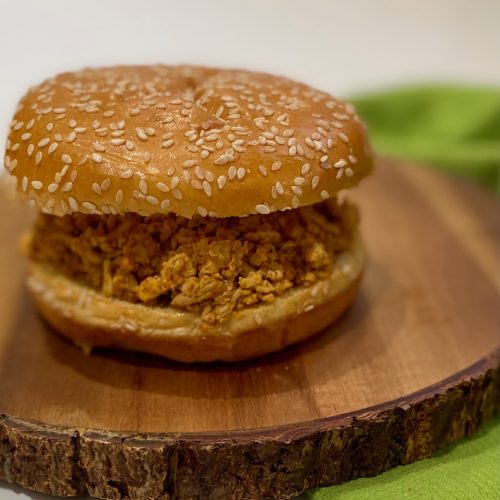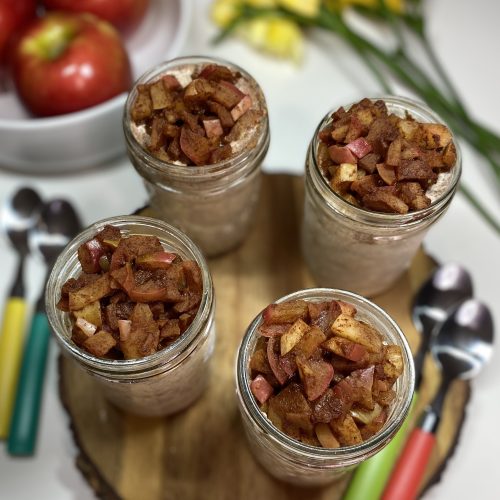
This article originally appeared on Canadian Food Focus, and I received monetary compensation from them to research and write this information. My articles represent my personal and professional views. I am one of many dietitian writers for Canadian Food Focus, which is a source for Canadian food and farming stories that provide advice to help you make confident food choices.
Canada’s Food Guide gives us general information about healthy eating. Now, a new report – Applying Canada’s Dietary Guidelines – by Health Canada shares additional recommendations to help you meet your nutritional needs. Here are 7 things you can do to eat better and why!
1. Eat a dark green veggie every day
Did you know that vegetables and fruit make up less than 25% of the foods we eat? We need to eat a dark green vegetable every day for essential vitamins and minerals, especially folate and iron.
Folate and iron are both important for red blood cells which carry oxygen from our lungs throughout our body.
Special attention: For adolescents and adults who could become pregnant and those who are pregnant / breastfeeding, eat foods rich in folate as well as take a daily multivitamin supplement with 400 mcg folic acid (400 micrograms or 0.4 milligrams). During pregnancy, the multivitamin should also contain iron.
Examples of dark green veggies:
- Arugula
- Asparagus
- Beet greens
- Bok choy
- Broccoli
- Brussels sprouts
- Chinese broccoli
- Collards
- Dandelion greens
- Fiddleheads
- Green beans
- Green peas
- Kale
- Mustard greens
- Okra
- Parsley (fresh)
- Rapini
- Romaine lettuce
- Spinach
- Swiss chard
- Seaweed (some types: kelp, dulse, wakame)
- Taro leaves
- Turnip greens
- Watercress
Recipe ideas: Kale Chickpea Salad with Trout, Blistered Green Beans with Ginger
2. Eat an orange veggie a few times a week
Orange veggies are super sources of beta-carotene which convert to vitamin A in our body. Vitamin A plays a role in keeping our eyes, skin and immune system healthy.
Special attention: Men and individuals who are breastfeeding should enjoy orange veggies more often – on most days of the week.
Examples of orange veggies:
- Acorn squash
- Butternut squash
- Carrots
- Hubbard squash
- Pumpkin
- Red and orange peppers
- Sweet potato
Recipe ideas: Mexican Stuffed Peppers with Quinoa, Beans and Corn, Sheet Pan Pork Tenderloin with Sweet Potatoes and Asparagus
3. Enjoy a variety of whole grains
On average, less than 30% of the total grains we eat are whole grain or whole wheat. Not only are whole grains naturally low in saturated fat, sodium and sugars but they also provide folate, thiamin, vitamin B6, iron, zinc, magnesium and fibre.
Enriched, refined grain foods (such as white rice and white bread) also provide iron and folic acid. However, breads can be a top source of sodium, and refined breakfast cereals / granola bars can be a source of added sugars.
Examples of whole grains:
- Amaranth
- Barley
- Brown rice
- Buckwheat
- Bulgur
- Corn
- Farro
- Kamut
- Millet
- Oats
- Popcorn
- Quinoa
- Rye
- Sorghum
- Spelt
- Teff
- Whole wheat bread
- Whole wheat pasta
Recipe ideas: Baked Mushroom and Herb Barley Risotto, Bulgur Chicken Burgers with Yogurt Sauce
4. Enjoy legumes, tofu, nuts or seeds every day for protein
Canada’s food guide recommends eating plant-based foods more often to reduce our overall intake of saturated fat. Currently, less than 20% of the protein foods we eat are plant-based. To pump up the plant protein, eat legumes (dried peas, beans, lentils, peanuts) or tofu at least once a day, as well as nuts or seeds at least once a day.
Recipe ideas: Chickpea Burger, Crispy Tofu Noodle Bowl
5. Eat foods with unsaturated fat
Replace foods high in saturated fat with foods which contain mostly unsaturated fat such as:
- avocado
- eggs
- fish and fatty fish (salmon, trout, herring, sardines, mackerel, arctic char)
- lean cuts of meat and wild grame
- lower fat dairy products, fortified soy beverages
- nuts, nut butters, seeds
- poultry without skin
- hummum
- tofu
- vegetable oils
Special attention: Help young children enjoy a variety of these foods throughout the day to help them meet their nutritional requirements for fat and calories.
Recipe ideas: Light Lemony Spring Herb Hummus, Crunchy Flax Chicken Nuggets
6. Get calcium every day
Calcium is a nutrient needed at all stages of life for bone health. Look for choices which meet your traditions and personal / cultural preferences.
Special attention: Children, adolescents, adult female and older adults have higher needs for calcium than others, so should include calcium containing foods at all meals and some snacks.
Examples of food sources of calcium:
- Lower fat, unsweetened milk, yogurt and kefir (0-2% M.F.)
- Unsweetened, fortified plant-based beverages (oat, soy, cashew, almond)
- Cheese that is lower in fat and sodium
- Tofu made with calcium
- Legumes (e.g. edamame, navy beans, white beans)
- Fish and shellfish (e.g. canned sardines / canned salmon with bones)
- Some dark green / leafy green vegetables (e.g. arugula, bok choy, Chinese broccoli, okra, rapini, watercress)
- Some seaweed (e.g. kelp, dulse, wakame)
Recipe ideas: Mac ‘n Cheese Muffins, Cod au Gratin
7. Get vitamin D every day from food and / or supplements
Vitamin D is made by the skin when exposed to sunlight. However many factors like smog, season, time of day, sunscreen use, and amount of skin exposed can all affect the amount of vitamin D that is produced.
If you don’t eats foods with vitamin D every day, take a 400 IU (10 mcg) vitamin D supplement. Some multivitamins also contain vitamin D.
Special attention: As we age, we make less vitamin D from the sun, and this can affect our bone health. Anyone aged 51 and older should take a 400 IU (10 mcg) vitamin D supplement every day in addition to eating vitamin D rich foods.
Examples of foods with vitamin D:
- Fatty fish (salmon, artic char, rainbow trout)
- Eggs (yolk)
- Unsweetened, lower fat milk
- Unsweetened, fortified plant-based beverages
- Soft margarine
Recipe ideas: Baked Salmon with Honey Mustard Marinade, Smoked Salmon Deviled Eggs
References: Health Canada (2022 May 7). Applying Canada’s Dietary Guidelines.






















